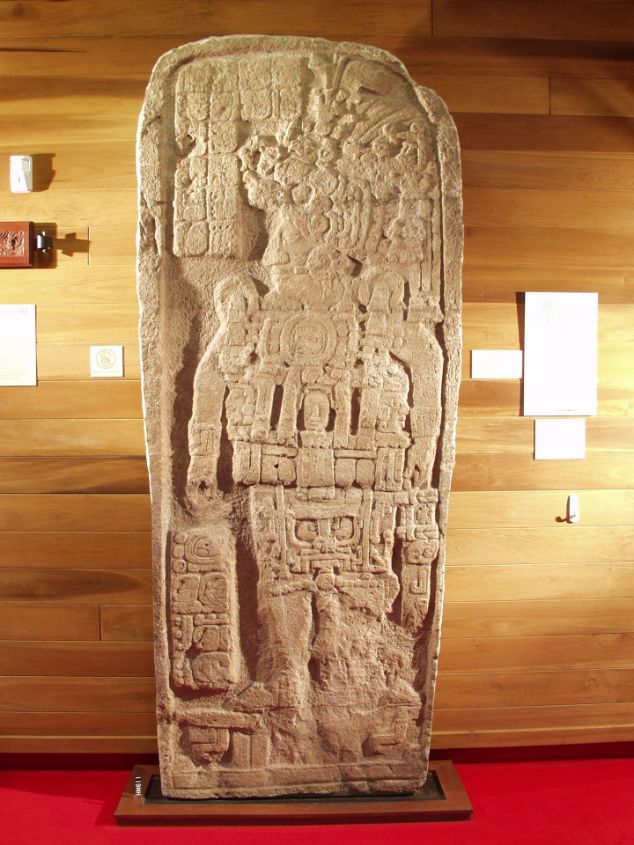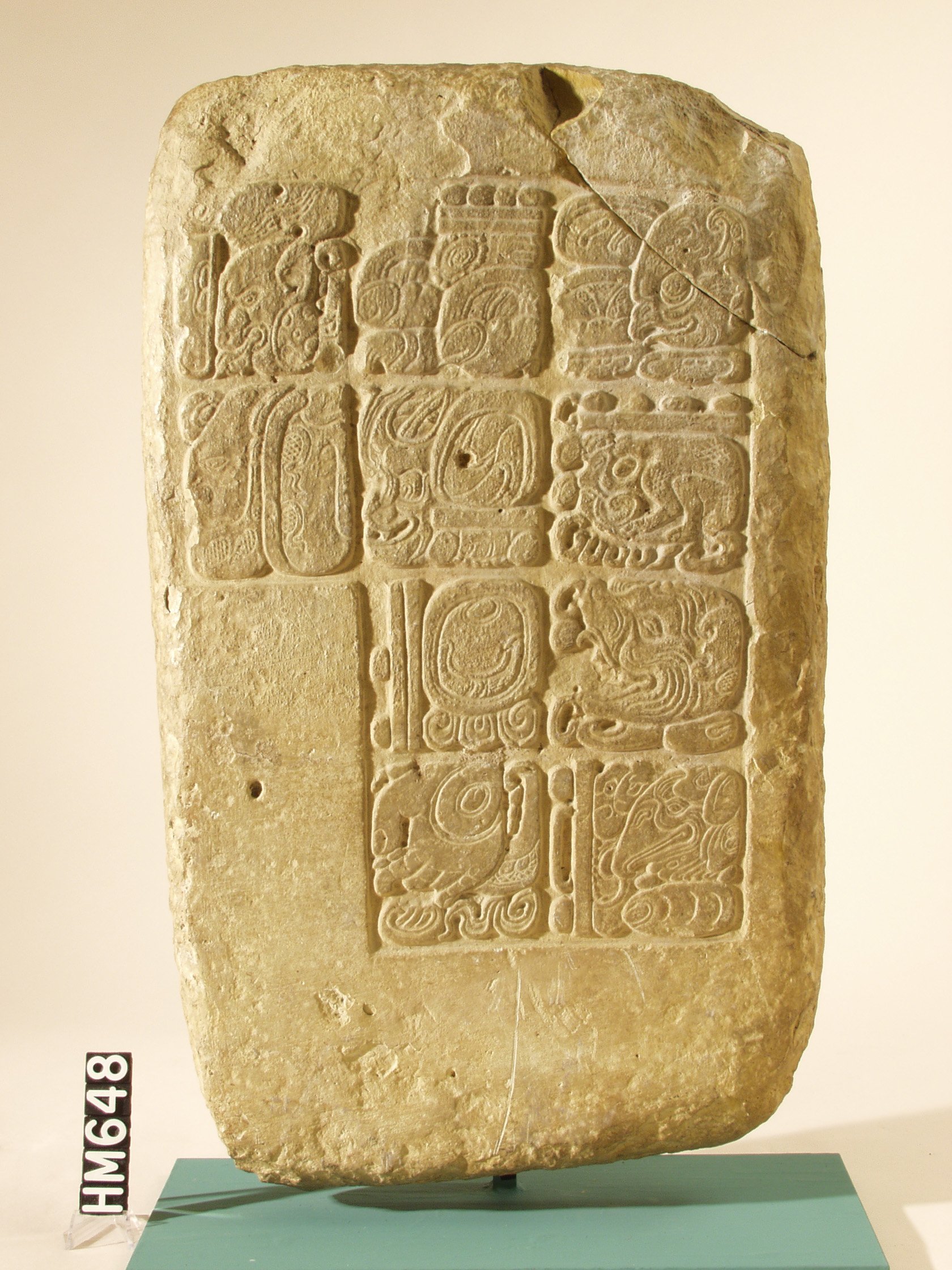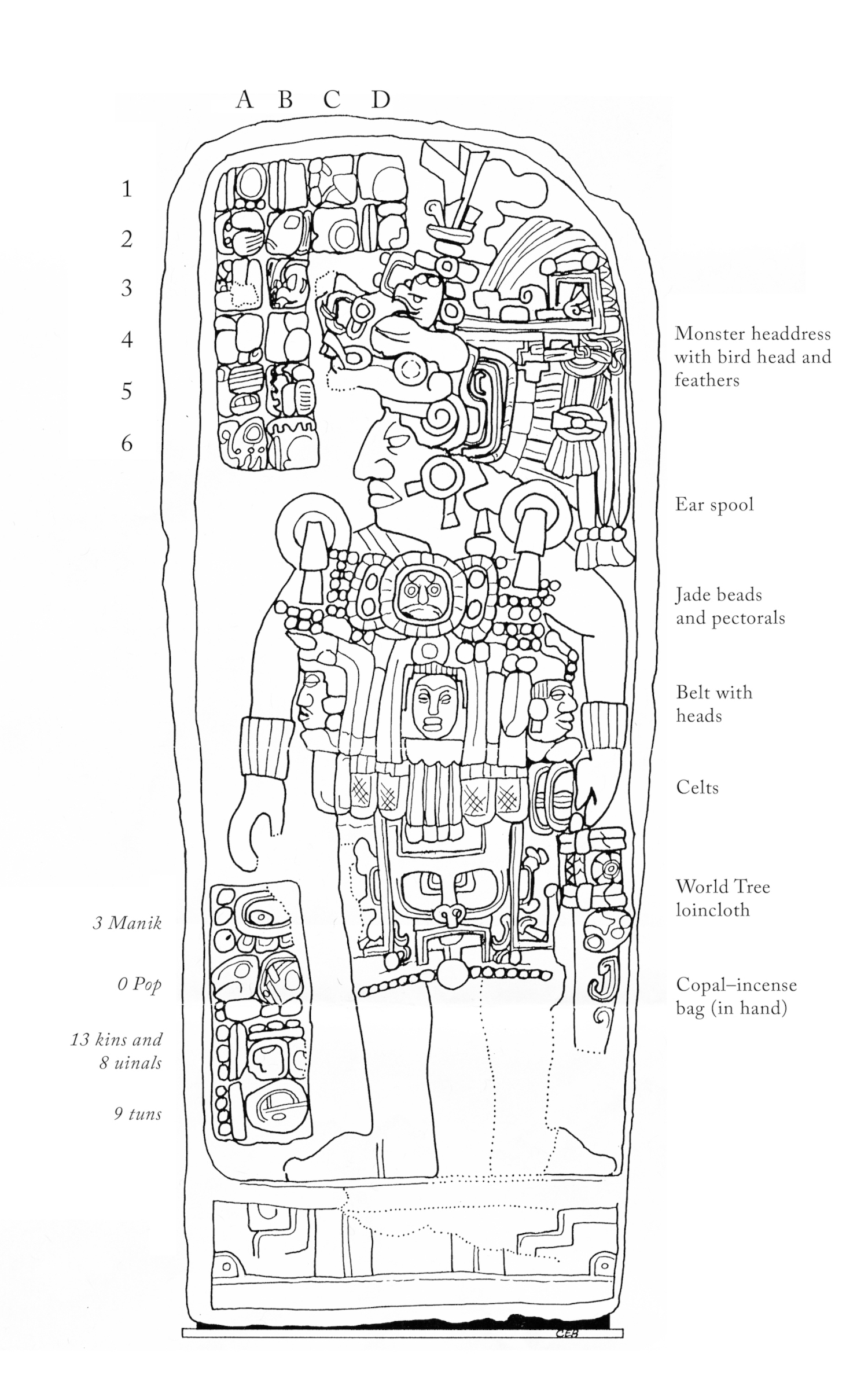Hudson Museum Scavenger Hunt: Maya Stele

Who are the Maya?
The ancient Maya lived in what is now Mexico, Belize, Guatemala, El Salvador, and Honduras. Between 2600 BC and 1800 BC, the Maya rose to power and extended their influence throughout the Yucatan, creating a highly developed a writing system, art, architecture, mathematics, and calendar system, based on astronomical observation.
Despite the fall of the Maya Empire around 900 CE, to this day the Maya continue to live in this region blending Pre-Columbian and post-contact cultural traditions.
What is a Stele?
Stelae are large carved stone monuments. Most stelae made by the Maya date to the Classic Period 250 to 900 BCE.
These works appear to be commemorative; they mark the reigns of kings and warriors and their deeds. They were originally painted in bright colors, but the pigments have not survived.
Many stelae have inscriptions written in glyphs: a graphic writing system.

To find the next code:
Turn your back to the Stele and move toward the case with masks on the left. Move around to the other side of the case and look for the scariest (and hairiest!) thing you can see. You can scan the QR code when you find it, or click here to continue.

